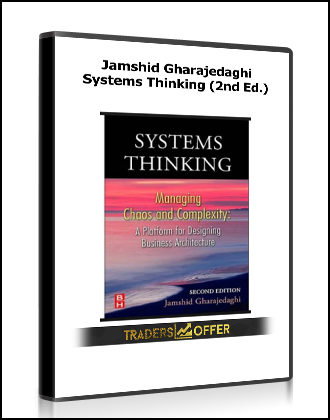
Jamshid Gharajedaghi – Systems Thinking (2nd Ed.)
Price: $25
Please contact us: – Email: Tradersoffer@gmail -Skype: [email protected]
This book is a direct result of the author’s work with the systems methodology first introduced by the author’s partner, Russell Ackoff.
It’s a holistic approach to systems methodology. It deals with all dimensions of a system: structure, function and process. Peter Senge introduced Systems Thinking/practice. Interact clients asked the author to write a book to take them “further down the Senge trail”. This book does that by taking the reader into “real world” stories. It is based on experiences in five real companies using systems practice.
It is about a new mode of seeing, doing and being in the world; a way of thinking through chaos and complexity. It speaks to those thinkers and practitioners who have come to realize that learning “to be” is as much a necessary part of a successful professional life as is the learning “to do.”
Natural science has discovered “chaos”. Social science has encountered “complexity.” But chaos and complexity are features of our perceptions and understanding. We see the world as increasingly more complex and chaotic because we use inadequate concepts to explain it. When we understand something, we no longer see it as chaotic or complex. It seems that playing the new game requires learning a new language. A language of interaction and design that will allow us to see through chaos and understand complexity.
In a nutshell, this book is about systems. However, it goes beyond the simple declaration of desirability of systems thinking. With a practical orientation and yet a profound theoretical depth, the book offers an operational handle on the whole by introducing an elaborate scheme called iterative design. The iterative design explicitly recognizes that choice is at the heart of human development.
Development is the capacity to choose; design is a vehicle for enhancement of choice and holistic thinking. Designers, in this book, seek to choose rather than predict the future. They try to understand rational, emotional, and cultural dimensions of choice and to produce a design that satisfies a multitude of functions. They learn how to use what they already know and also about how to learn what they need to know.
